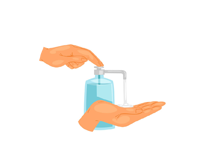Cilastatin
Introduction
Cilastatin is a pharmaceutical compound used in combination with the antibiotic Imipenem to prevent kidney damage and enhance antibiotic effectiveness. It acts as a dehydropeptidase inhibitor, preventing the breakdown of Imipenem by renal enzymes. Cilastatin itself has no antibacterial action but plays a vital role in protecting the kidneys from the potentially toxic effects of antibiotics. This combination is particularly useful in treating severe bacterial infections in hospitals, including infections of the lungs, urinary tract, abdomen, and skin. It is administered under medical supervision and ensures that the antibiotic remains effective for a longer duration.
Medicine Not Available for Cilastatin
Uses of Cilastatin
- Prevents the degradation of Imipenem in the kidneys
- Protects kidney function during high-dose antibiotic therapy
- Supports treatment of serious bacterial infections
- Used in hospital settings for infections resistant to other treatments
- Part of combination therapy with Imipenem
How Cilastatin Works
Cilastatin works by inhibiting the enzyme dehydropeptidase I in the kidneys. This enzyme normally breaks down Imipenem, reducing its effectiveness and increasing the risk of kidney damage. By blocking this enzyme, Cilastatin preserves the antibiotic’s activity and protects renal tissue.
Benefits of Cilastatin
- Enhances the effectiveness of Imipenem
- Reduces the risk of antibiotic-induced kidney damage
- Extends the duration of antibiotic action
- Improves outcomes in severe bacterial infections
- Ensures safer use of high-potency antibiotics
How to Take Cilastatin
Cilastatin is administered intravenously, usually in combination with Imipenem, by a healthcare professional in a clinical setting. The dosage and frequency are based on the severity of infection, kidney function, and patient response. It is not intended for oral use or self-administration.
Type of Dosage Available
- Intravenous injection (IV)
- Powder for solution (reconstituted before IV use)
Side Effects of Cilastatin
- Nausea or vomiting
- Rash or skin irritation
- Injection site reactions (pain, redness)
- Diarrhea
- Seizures (rare and mostly at high doses or in patients with kidney issues)
Safety Advice
- Administer only under medical supervision
- Adjust dose in patients with impaired kidney function
- Inform your doctor about any seizure disorders
- Not recommended for use in children without medical advice
- Monitor kidney function during prolonged treatment
Frequently Asked Questions (FAQs)
Q: What is Cilastatin used for?
A: Cilastatin is used with Imipenem to prevent the antibiotic from being broken down in the kidneys and to reduce the risk of kidney damage.
Q: Does Cilastatin have antibacterial properties?
A: No, Cilastatin does not kill bacteria. It supports the antibiotic Imipenem by protecting it from enzymatic degradation.
Q: Is Cilastatin available alone?
A: No, it is typically available in combination with Imipenem in injectable form.
Q: Can Cilastatin be taken orally?
A: No, Cilastatin is only administered through intravenous injection under medical supervision.
Q: Are there any serious side effects of Cilastatin?
A: Serious side effects are rare but may include seizures, especially in patients with kidney problems or if used in high doses.
Download India's most affordable pharmacy app
- Compare with medicine prices
- Save upto 90% on your medicine bills

Temperature Controlled storage and delivery

Regular Sanitization

Disinfected Packaging

















 Added!
Added!